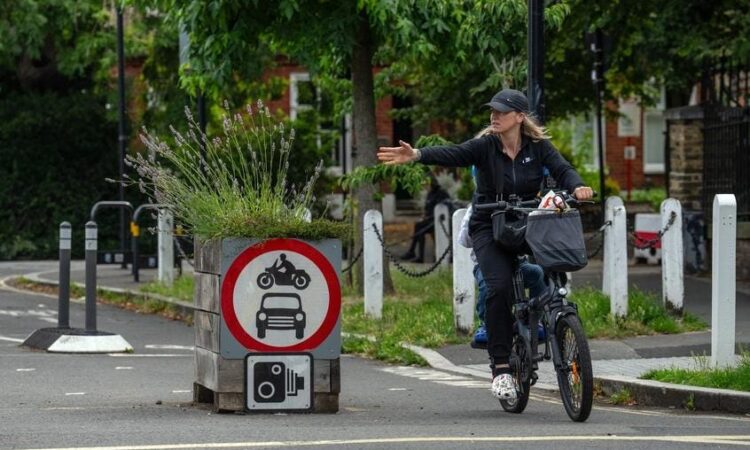
Getty Images
The U.K.’s Department for Transport (DfT) has today issued eleven “plan for drivers” press releases, with several of them leading on “low traffic neighborhoods” (LTNs).
Buried in among the press releases is a report commissioned by Prime Minister Rishi Sunak with the presumed aim of discrediting LTNs, but it has done the opposite.
Low Traffic Neighbourhoods: Research Report, issued on Sunday, 17 March, states: “LTNs are effective in achieving outcomes of reducing traffic volumes within internal roads.”
Furthermore, “LTNs have succeeded in improving air quality on internal roads,” and “there has been less street crime and improved road safety within LTNs.”
Citing international evidence, the DfT’s report also states: “International evidence supports findings of UK LTNs. Tactical urbanism interventions in Barcelona led to a significant decrease in traffic levels on intervention streets from 2019-2021, with an average relative reduction of about 14.8% and a total relative reduction of 13.6% across all intervention streets.”
Those living in areas where rat running have been removed have better “quality of life,” shows the DfT report: “By reducing traffic and emissions, LTNs can contribute to a cleaner, safer environment within schemes. This in turn can encourage active travel and improve quality of life.”
LTNs are also good for the economy, confirms the DfT report: “International evidence indicates that low-traffic, car-free and pedestrianisation initiatives are succeeding in creating destinations that are attractive for both residents and retail. This is reflected in sales and property prices.”
The DfT’s research points out that “studies, including San Francisco, California, and Toronto, Ontario, have shown that cyclists and pedestrians generally spend more per month in commercial areas than visitors who arrive by car or public transport. For instance, in Copenhagen’s Ströget, pedestrianisation led to a 30% increase in sales within a year and in New York City’s Time Square, pedestrianisation resulted in a 22% increase in economic activity between 2007 and 2011.”
In a press release—“Crackdown on anti-driver road schemes and blanket 20mph limits to put local consent first”—the DfT stated that there were “concerns” from emergency services that any delays to crews caught up in LTNs could “potentially risk lives.”
However, the DfT’s LTN research report stated that “LTNs do not adversely affect response times for emergency vehicles.”
Getty Images
Despite the overwhelming evidence provided in the government report, Transport Secretary Mark Harper said in the lead press release issued today: “We’re on the side of drivers … making their lives better, fairer and cheaper, and helping people travel in the way that works best for them.”
Speaking on BBC’s Sunday with Laura Kuenssberg program, Harper said “what we’re proposing is very sensible and if councils listen to our guidance that will be fine.
“If they don’t we’ll have to think about other measures about funding and things like that in the future.”
This threat to pull funding from already cash-strapped councils—including cutting access to the Driver Vehicle Licensing Authority database, which matches car registrations to their owners, to prevent them from fining drivers who pass through LTNs—would require a change in legislation, not something that is likely in the febrile, pre-election months ahead.
Clyde Loakes, the deputy leader of Labour-led Waltham Forest council, told the Guardian that removing DVLA access would “destroy our popular and successful active travel schemes, put schoolchildren in danger, open up to fraud resident priority parking schemes and gut our important concessionary travel schemes for older people and those with disabilities.”
Responding to today’s slew of press releases, some of which criticized a supposed lack of consultation with residents, the Local Government Association said:
“Low traffic neighbourhoods are popular as they reduce traffic, making neighborhoods safer by encouraging more people to walk, wheel or cycle and can improve air quality.
“Councils already consult with all residents and businesses to find the best solutions to ease congestion and improve air quality for everyone.”






